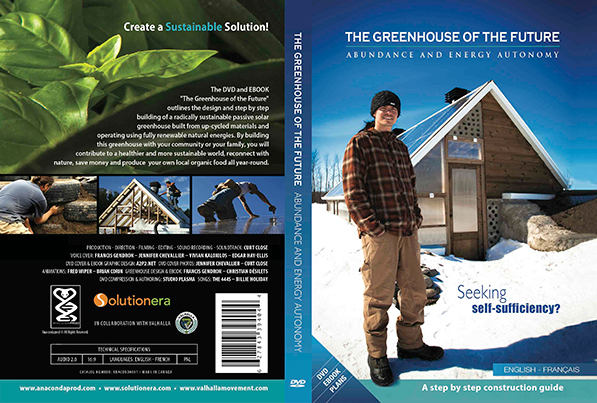
This is a greenhouse based on the Earthship design. Earthship is a trademark design and it was started by Michael Reynolds of Earthship Biotecture. The company is based in Taos New Mexico.
The walls of an Earthship home are typically made of discarded tires and usually packed with dirt and then covered with adobe, concrete or some other material to seal the tires off from the environment in essence and to provide more stability to the walls.
“Based on 40 years of experience by the Earthship Biotecture enterprise in house construction using tire foundations and, according to scientific researches on the subject, burying tires represent a minimal risk to human health and the environment”.
Things to Consider
Tires can be found virtually anywhere, and often times they can be found and gathered free. It is costly for companies to dispose of tires properly so they generally end up in a pile somewhere waiting for removal. Garages/service shops in some cases, will charge you a disposal fee when selling you new tires if they are the ones that are mounting the new tires, and removing the old ones. With this in mind you can likely gather all of the tires needed for virtually nothing more than the labor and time needed to haul them back home.
Tires are easy to work with and do not require any specific skills to construct a wall with them. Everyone in the family can be involved in the project. Of course gathering tires and utilizing them in an environmentally friendly ways means less tires in landfills and less tires laying around filled with water. Tires are beacons for rodents, and snakes and when filled with water they are breeding grounds for mosquitoes. Once in place people have found that tires are more resilient over time than concrete.
Glass bottles can be incorporated into the walls, and again you can probably find all that you need by asking local vendors, restaurants, and even bars for their empty containers. They have to pay someone to haul off their empty bottles so make sure it is you hauling some away for your greenhouse project. Bottles incorporated in the walls, especially colored ones can add light and color.
The greenhouse is based on passive solar heat which means less glass than a traditional greenhouse, but with the roof being orientated properly and insulation of the north side the greenhouse would better contain the heat that was gathered during the daylight hours. Keep in mind with this design it could be used for more than just a greenhouse. The south side of the greenhouse is constructed totally of glass or some other material typically used for greenhouse construction.
The slanting sun during the winter months shines through the south side glass heating the tire walls, which in turn will radiate the heat back into the structure as the temperature drops at night. You would not need an alternative heat source at night in most cases.
Location will be an important factor because of the design. You will need a location that provides the most direct sunlight to the roof and south wall. Remember when deciding on a location that the leaves on the trees will be gone in the winter months, which would allow more sunlight during the colder months. The proper location cannot be stressed enough, because you want maximum sunlight.
Many of the materials can be salvaged and with a little imagination you can repurpose just about anything for this project. You will need basic construction tools, cement mixer possibly, and some heavier equipment for excavation if it is needed. You will need some helpers of course and you will have to purchase some materials new but they are limited. You will need to know how to follow a basic blueprint designs, but this is your project, so it can essentially look like anything you want it to look like as long as the basic premise of a greenhouse is kept intact.
For those striving toward self-sufficiency this is a perfect project. Living off grid means you will have to salvage materials because nothing can go to waste.
In a grid down situation tires, for example, will be plentiful because cars will likely be abandoned for the most part. You have to remember in some situations you cannot just run to the store for materials or food so to prepare for this type of survival situation you have to have certain infrastructure in place so you can truly be self sufficient.
If you cannot make it or buy then you have to use what is available to you and this is the basic concept behind Earthship construction. By reading this article you are interested in permaculture and possibly with organic food production. Without a doubt many of you are interested in becoming more if not totally self-reliant.
Final Thoughts
You can learn more about sustainable technologies, and save money by growing your own organic foods by following the links listed below.
There are the plans the EBook and a documentary that all describe in detail how to get started and how to finish your project.
The environmental benefits aside, growing your own food is a big step toward self-sufficiency. Not everyone can break the ties completely regardless of their desire, but you can certainly take the first step in the right direction by building your own Greenhouse of The Future by following the very simple design already developed.
Watch the exciting new video trailer (watch here) and visit the website of the developer. The documentary offered will take you through the entire process. The documentary once you watch it will change your mind about a lot of things, and it may very well remove some of the barriers and possible misconceptions that may have prevented you from constructing your own Greenhouse Of The Future.